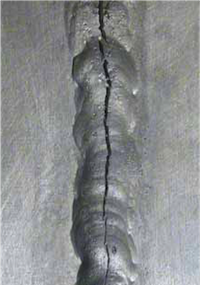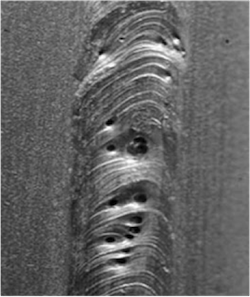What is Aluminum Welding?
Aluminum is a lightweight and low strength metal that can easily be formed and welded. Unless alloyed with specific elements, it is only suitable in low temperature applications. Below are a few forms of defects that can be found during the aluminum welding procedure, the best practices to prevent them.
Preventing Cracking:
There are a few different forms of cracking that are associated with metal welding. The two that are most notorious are Hot and Cold cracking. Hot Cracking is the formation of shrinkage cracks during the solidification of a metal. Preventing hot cracking can be as simple as choosing a filler metal that has a weld metal chemistry with a lower crack sensitivity. You can also prevent hot cracking by making sure you are using an appropriate joint design.

Cold cracking is when hydrogen dissolves in the weld metal then diffuses into the heat affected zone. Cold cracking occurs at temperatures that are well below 600°F and is considered to be a very serious defect. To prevent cold cracking you can try pre-heating the base material in order to reduce the speed of cooling. You can also use welding consumables that are low in hydrogen to minimize the hydrogen that is diffused into the weld.
Preventing Burn-Through or Poor Penetration:
Burn through is caused by applying too much heat to metal and burning a large gap in it. Since welding requires enough heat to fuse the metals properly, burn through can result when a welder fails to balance heat and speed. To prevent burn through when aluminum TIG welding, weld at a low amperage, with a long point on the electrode. When aluminum MIG welding, use a gun that pulses. It will provide enough heating and cooling at the proper intervals to prevent burn-through.
Preventing Porosity:

Welding porosity is a metal contamination in the form of trapped gas. Shielded gasses are absorbed into the molten metal and released as solidification takes place. Porosity in welding is weak, bubble-filled welds that do not meet code and more importantly can in some cases, cause parts of a project to become weak and collapse. Weld preparation of pipe surfaces prior to welding can prove to be critical. To eliminate the worry of contamination around the weld zone and to ensure a high-quality weld, Aquasol has developed EZ Wipes. The concentrated cleaning liquid in our cleaning wipes allows for easy removal of fluid lubricants, oils, inks, grease and some adhesives, which helps prevent porosity in welding.
© 2025 Aquasol Corporation. All Right Reserved.
